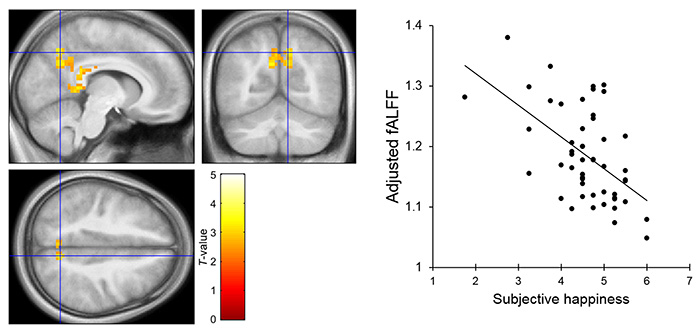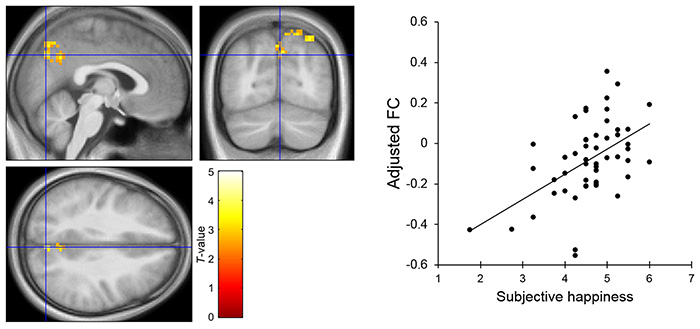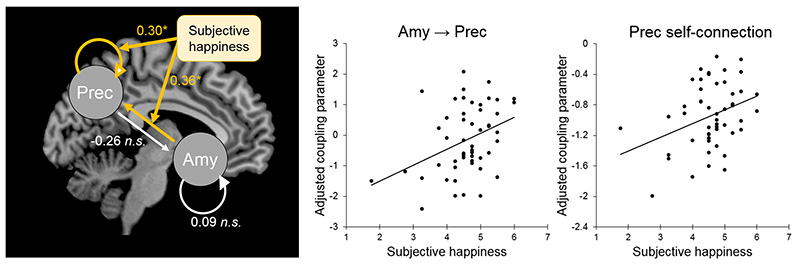SATO Wataru Laboratory
Resting-state neural activity and connectivity associated with subjective happiness
(Sato*, Kochiyama*, Uono, Sawada, Kubota, Yoshimura, & Toichi (* equal contributors): Sci Rep)
The majority of people throughout the world rate subjective happiness as the top of the important thing in life.
A recent structural neuroimaging study exploring neurocognitive mechanisms underlying subjective happiness has suggested that the gray matter volume of the right precuneus is associated with Subjective Happiness Scale (SHS) scores.
However, how the neural activity in this region, as well as the neural functional coupling between this and other regions, could be related to SHS scores remains unclear.
To investigate these issues, we performed resting-state functional magnetic resonance imaging and analyzed the fractional amplitude of low-frequency fluctuation (fALFF) in participants, whose subjective happiness was evaluated using the SHS.
Lower fALFF values in the right precuneus were associated with higher SHS scores.

Furthermore, functional connectivity and spectral dynamic causal modeling analyses showed that both functional and effective connectivity of the right precuneus with the right amygdala were positively associated with SHS scores.


These findings, together with other evidence on the information-processing functions of these brain regions, suggest the possibility that subjective happiness is associated with a reduction in self-referential mental processes, which are well integrated with emotional processing.
Return to
Recent Research.
Return to
Main Menu.


